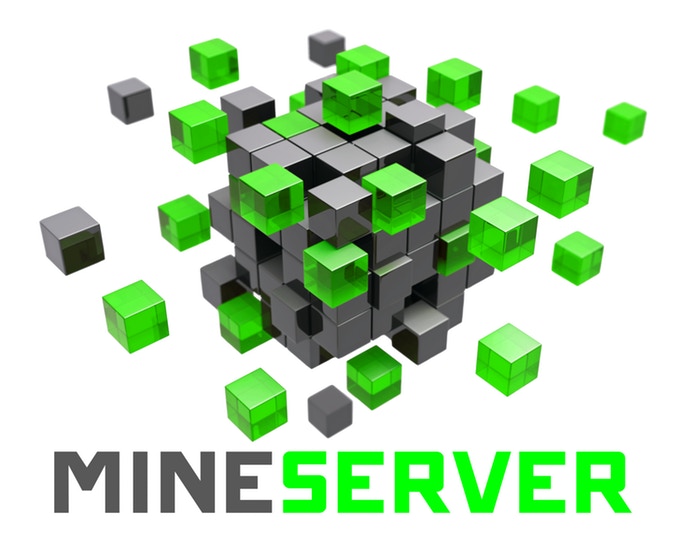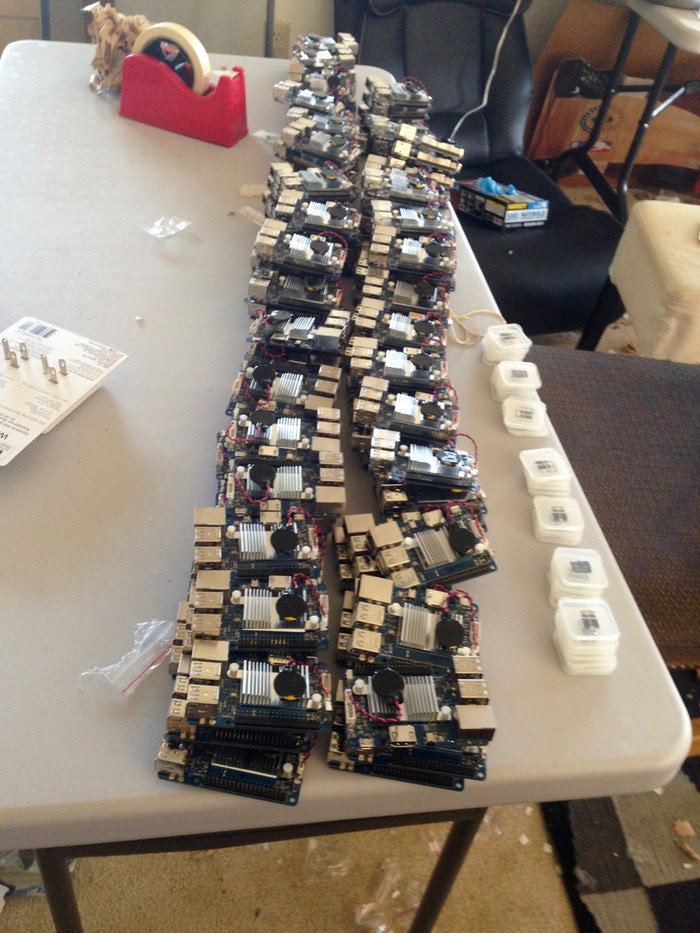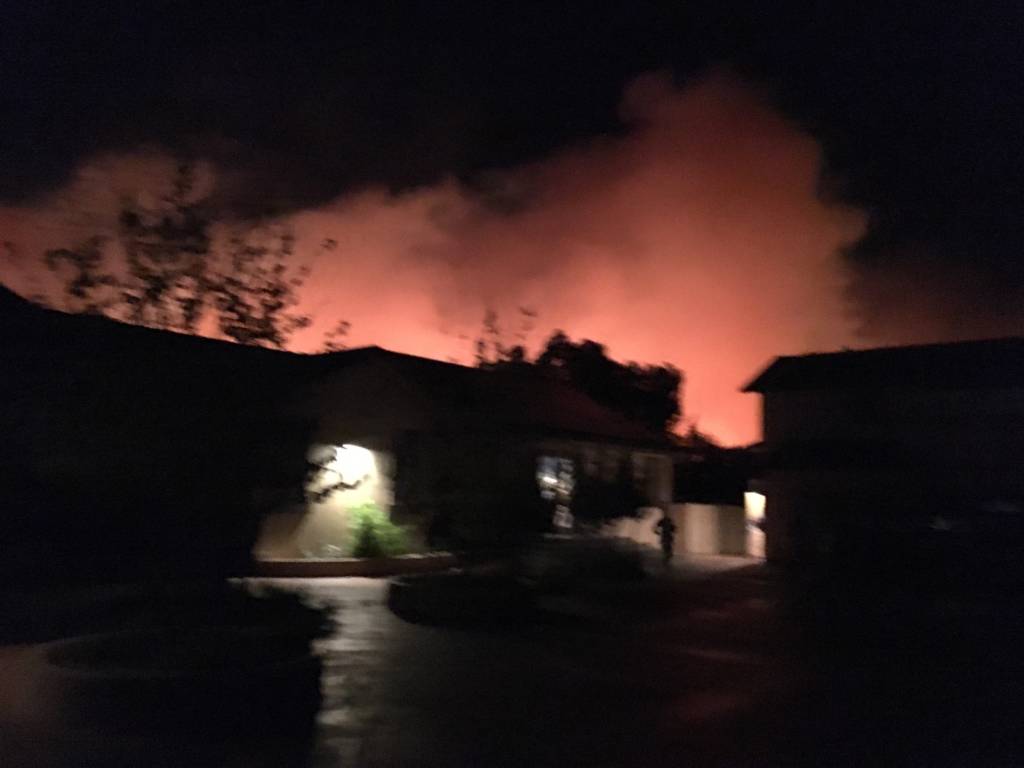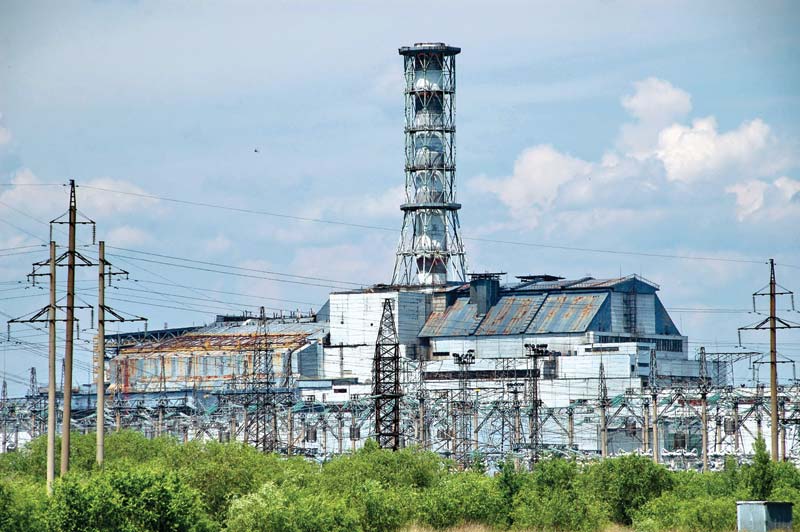Popular blog posts
Recent forum posts
Discussion Forum
Discussion forumThe cost of lies: A Mineserver story
Post #: 272
Post type: Page
Date: 2020-04-09 17:21:47.000
Author: Jeremy Reimer
Tags:

Creating and shipping a brand new product is insanely difficult. It takes a ton of money, sweat, and time. Even people with tons of experience can underestimate timelines and encounter unexpected difficulties. So telling the story of a failed Kickstarter is not especially interesting.
This is not that story.
This is a story about what happens when someone builds up a reputation over decades of work and then destroys it in a couple of years. Not because they failed, but because they lied about it. Over and over again. Until the lies got too much to handle, and they had to create newer, even larger lies to cover them up.
Why would anyone do this? We'll get into that at the end. But first, the story.
ACT ONE
Robert X. Cringely is a pseudonym of Mark Stephens, a long-time computer columnist and author. He was best known for his 1992 book Accidental Empires, which told the story of Bill Gates and Steve Jobs in an entertaining way. In 1996, the book became a popular TV series on PBS and the UK's Channel 4 called Triumph of the Nerds. The show was, and is, an amazing piece of work. It featured interviews with many of the big players of the early personal computing landscape.
Cringely portrayed himself as an affable nerd who was envious of the riches earned by Silicon Valley entrepreneurs. At one point in the show he said he had briefly been Employee #12 at Apple, and helped move them out of Jobs' garage. He said he was offered Apple stock, but held out for cash.
Over the next decade, Cringely built up an online column on the PBS website, and attracted many followers. He left PBS in 2008 and struck out on his own, writing columns about computer history, economics, and even aerospace on his own website, cringely.com. One thing that became a sort of personal trademark was that Cringely would post dramatic predictions about some new miracle technology that would soon take over the world.
Some of them, like foil-based hard drives, were also ventures that Cringely was personally invested in. He even gave talks at tech conferences where he started with a claim that he invented the Trash Can icon and ended with a long pitch for the business.
None of these ventures panned out. Not the foil hard drives, not the innovative electric airplanes, and certainly not the "Team Cringely" attempt to win the Lunar X-Prize by landing a robot on the moon (that one literally never got off the drawing board). It would be easy to dismiss these as mere flights of fancy, or as merely a tech journalist being overly-excited over new technology. Who can fault someone for enthusiasm?
But everything changed on September 29, 2015. That's when Cringely announced the Mineserver project on Kickstarter.
ACT TWO
At first, it seemed like a simple, fun activity that his three young kids (all Minecraft fanatics) could help out with. The project raised more than double its goal, with 388 total backers pledging a total of $35,452. The servers would be tiny, inexpensive ARM-based boards, slightly more powerful than a Raspberry Pi.
Things moved quickly at the beginning. In the first month, Cringely posted pictures of the boards, the SD cards that would hold the open-source Minecraft server software, and the plastic shells etched by a laser cutter that would serve as the cases. On October 28, 2015, he posted: "In terms of development, this project was almost finished before the Kickstarter campaign began."
There were a few minor setbacks. The laser cutter broke and had to be repaired. Software choices (like which server to include) were trickier than initially thought. On December 14, 2015, Cringely posted "All these Mineservers will ship this week. Software is complete and SD cards are being duplicated. T-shirts are being printed every night by small boys." The next week, he posted: "Denial plays a huge role in every startup. Sometimes it's a good thing. Again, we're sorry, but shipping will be delayed about one week."
The next update was a month later.
"First, an apology," Cringely began. "We're sorry to have taken so long to post this update. We know people have been expecting their Mineservers and are upset with us. We'll be more transparent in future." Cringely posted a picture of some of the boards and said "You can see that's all done-- 425 units burned-in and ready to go. But we can't install the boards and put the lids on until the software is finalized."

The next update was two months later, on March 17, 2016. "Sorry to have gone so long without an update," came the familiar refrain. “We won’t do THAT again.” But Cringely promised there was just one "final bug" to fix in the software and that they fully expected to ship next week. Cringely admitted that the project was "$7500 in the hole" but that it wasn't that much overhead to start a technology business.
Another month went by. "This beta test will last no more than two weeks." was the promise. Another month passed. "There remains one final problem." Now we were into July. "Once we have the AIM update we will begin shipping within hours as all the Mineservers (more than 300 of them) have long been finished and are waiting only for their SD cards."
August rolled around and the Kickstarter backers were still waiting. In September, Cringely said that their choice of Linux (Arch) wouldn't work with the WiFi adapters they had picked. They fixed that, but in October, they were "still a couple of weeks from shipping" because they needed to do more network testing. Finally, on November 10, 2016, more than a year after the project was expected to ship, Cringely wrote: "We'll finally start shipping the week after Thanksgiving. Thanks for your patience and support."
Nothing was shipped, and there were no more updates posted to the Kickstarter project. Ever.
ACT THREE
It wasn't the end of the story, however. On January 9, 2017, Cringely posted a bunch of predictions for 2017 on his blog. Someone immediately commented: "First on the list of FAILED predictions: Mineservers will ship for Christmas 2015". Cringely replied: "Touche. More on that in a few days." It wasn't a few days, though. It was a full four months before he would mention the topic again.
On May 22, 2017, Cringely posted an update on his own blog with the subject line: "Mineserver update: We're not dead yet!" The post started off boldly, ignoring the six-month silence (and continuing Kickstarter silence) completely. "This is our 25th update on the Mineserver project. That's a lot of updates for people who don't do enough updates." Right off the bat, he was attacking the reader, claiming that they were being unfair about his pace of updates. Then things got weirder.
Cringely admitted that the project had stalled because they were out of money. Sure, they had received $30,000 from Kickstarter after deduction of their fees, but the project itself had consumed $90,000 and there was no more cash in the Cringely barrel. So at that point, rather than admit defeat, he decided to reformulate the project as a proper startup, with lawyers and investors. The reason for the long silence was two-fold: one, that their delicate negotiations with investors had to be kept under wraps, and two, that they couldn't blame their suppliers in public. This last admission was odd: what would they be blaming their suppliers for, exactly? The answer was even stranger: they were waiting on suppliers who were giving 90 percent discounts, and therefore they could not criticize their slow delivery timeline. Except, by merely stating this, Cringely was criticizing their suppliers. Not to mention the fact that 90 percent discounts are completely unheard of in the electronics industry.
But the post ended on a hopeful note. Cringely said he had set out to find investors and raise seed money, and "the pitch must have worked, because we've found just enough investors to move on to the next level, which is shipping our current orders."
This happy conclusion, though, was not to be. Two months later, Cringely posted that he was suddenly blind from cataracts, but that he would have his sight restored in ten days, and maybe everyone could lay off asking about Mineserver updates until then. But there was only silence for another three months.
That silence ended on October 13 2017. That's when Cringely posted the infamous shot of his house in Santa Rosa. Blurry and unfocused, the house was framed by an orange light. Cringely explained that he and his family had been forced to retreat, on very short notice, from the Tubbs fire.

According to Cringely, he was still blind at the time, so therefore the family could take only one car, leaving the other one to burn. And, more importantly for the story, all the assembled Mineservers were left to burn as well.
Surely that was the end of the tale! As a narrative, all it needed was a denouement. But that wasn't to come.
ACT FOUR
On January 2, 2018, Cringely proudly posted "A visionary returns", where he started off addressing what he referred to as "The Mineserver Jihad". At first it was just a recap of unfortunate events: the project depended on kids, who weren't reliable, then Cringely went blind, then the whole thing burned down. But rather than an apology, what followed was a confident prediction of success: "We're finally back at work, though, at Mineserver LLC, and will have a revised design ready to go shortly. Look for a spec update and new shipping schedule in a couple more weeks, followed shortly by a clever marketing announcement you may enjoy."
At this point, you can probably guess what happened in two weeks. Nothing. Nothing happened for four more months.
On May 21, 2018, Cringely addressed the Mineserver issue again. He claimed that the insurance company would take 16 more months to pay him anything for his home, and that it might not pay for the melted Mineservers at all. But yet again, the promise: "We're back in the Mineserver business, preparing a successor model because the available boards and other parts have all changed. Every supporter will get their Mineserver before the end of the year."
This pattern would repeat a few more times throughout 2018. In August: "We'll have a Mineserver report next week." In September: "A startup I've been advising was recently sold [and] once that money is in hand a great deal of it will go to the Mineserver project." There was always a promise that money would be found somewhere, and that Mineservers would finally ship.
But the year ended with no Mineservers shipped. On January 28, 2019, Cringely posted that he was "Two thirds done, yet still writing predictions." The two-thirds was in reference to his 66th birthday, and the predictions were put on hold in favor of addressing the Mineserver controversy yet again. This time, he said that he couldn't find an investor, and blamed this entirely on the "townspeople with pitchforks" who through their comments and criticisms "killed every deal." At the same time, he implored these same commentators to "help find us a solution". Was Cringely expecting people in the comments to find him investors? "We have a good product and a great marketing plan... if it weren't for those darned pitchforks."
Karl Marx said that history repeats itself, first as a tragedy and second as a farce. Clearly we had entered the farce portion of the story. If only people would stop complaining about not getting Mineservers for long enough, they might be able to get Mineservers!
There were, in fact, a few "pitchfork" commentators. But the most devastating comments were from people who were being kind:
"Bob, Happy birthday. Keep up the columns. And just announce that the MineServer project is dead. Closure will help you, and the rest of us. Kickstarter projects fail. I’ve had some good ones, and some bad ones. But what hurts with this one is the denial that it failed. Write up your experiences just as you would if you were interviewing yourself. That would help others. And we could move on. Thanks!"
Cringely did not take this advice. However, he did eventually take an extended vacation from his own blog. On June 7, 2019, Cringely posted his thoughts on "The Future of Television", not bothering to mention Mineservers at all. Then he didn't post anything to his blog for the rest of the year. As his final post reached the six-month deadline for allowing replies, the remaining commentators mused about what Cringely was up to. He wasn't dead, because he was still posting about airplane trivia on Quora.com. So what was he doing?
ACT FIVE
On January 23, 2020, he let us know. And the answer was more bizarre than anyone could have guessed. It also sealed the final nail in the coffin of Robert Cringely's credibility.
In a post entitled "Not dead yet! What Bob Cringely has been up to..." he started with a picture of a jet aircraft carrying what looked like a large missile or rocket slung below it. He explained that he was trying to restart the Mineserver project, and had in fact found a venture capitalist to help. But this mysterious VC wanted a co-investor to “share the risk” before writing a check. Cringely couldn’t find one, so he said he was going to earn the money himself.
How? From his new startup, Eldorado Space. What was this startup? It was nothing less than a satellite launch company, and it was going to conquer the world of rapid launches by attaching solid rocket boosters to jets. At the end of the article, Cringely bragged that no other startup could copy what they were doing, because it required a fleet of Mach 2.2+ launch aircraft, and Eldorado had "bought all of them, you see... all of them on the planet."
This was a bold claim, and one that Cringely's eager readers quickly dove into. The problem was, it was false. The bigger problem was, it was laughably so.

The first sign that something was wrong was the photograph, which showed an F-104 aircraft with an "ELDORADO" logo on the side. A quick Google Image Search showed that it was in fact a Photoshop of a much older photo of an F-104 that belonged to Starfighters Aerospace. So... had Eldorado bought out Starfighters? And if they had, why couldn't they post an image of their new airplane that wasn't a Photoshop?
The story got shakier the longer you looked at it. Starfighters was an organization that had been around for many years, first as a sort of traveling airshow, and then as a partner with NASA to test space equipment before it went up into orbit. It turned out that other startups already had the idea of using these planes as launch platforms for small satellites. One outfit, called CubeCab, had partnered with Starfighters for just such a plan. Unfortunately, CubeCab had spent six years on their project and hadn't been able to find enough investment capital to fund a single launch. As they said on their Twitter: "Customers, customers, customers. So many institutions want a dedicated CubeSat launch, and for someone else to fund development." No bucks, no Buck Rogers.
Designing rockets is expensive. Renting out supersonic aircraft to launch satellites in rockets isn't cheap either. For a startup launch company, buying out the entire supply chain including all the aircraft was simply bonkers. But could it have happened anyway? Could some Bezos-type billionaire have secretly bought out Starfighters on a whim, while letting Cringely take all the credit?
No points for guessing that no, they hadn't.
To answer the question once and for all, I contacted the owner of Starfighters, Rick Svetkoff. He confirmed that someone representing Eldorado had met with them a few months ago, but the meeting was about a potential partnership, not a buyout. The talks were preliminary only. There was no term sheet signed and no money changed hands. Rick told me that in his business, there were a lot of "tire kickers". I could understand that. Lots of people probably want to take a Mach 2.2 jet fighter out for a ride. Few can actually afford to do it.
So why would Cringely lie about buying the entire fleet? Why not just tell the truth, that Eldorado was trying to partner with Starfighters but needed to raise money? Why Photoshop a logo and a fake rocket and pretend that it was real? Why say something that was so easily proven wrong and destroy your credibility forever?
These were good questions. But as Cringely would not admit to his false claim, despite the clear evidence against him, we would never know the answers. But we could at least guess at them.
EPILOGUE: THE COST OF LIES
When you start out with little lies, it’s easy. The lies aren’t super important, and who is going to bother to check, anyway?
So what if the actual Apple employee #12 was Daniel Kottke? Maybe Bob just got the wrong number.
So what if the actual inventors of the Trash Can icon were Dan Smith and Bill Atkinson? Maybe Bob was just exaggerating. Who cares?
But the problem with telling lies for so long and getting away with it is that you start to believe you can say anything. The lies become a crutch. At every turn, they can make you feel more interesting, more important, and more powerful.
And when you encounter difficulties in the real world, it’s easy to put out a quick lie to try and smooth things over. And it works! For a while, anyway.
Parts (and shipping) can be more expensive than you first estimated. So why not show a picture of about 100 SD cards and say that it’s the complete batch of 400? Here’s a photo of about 85 boards-- let’s use it as proof that the entire batch of 425 is “ready to go”. Why not? What, are people going to count them? Ship these out, get more orders, and use that cash to fund the next batch. Just like a real startup!
And software is complicated, right? So there can always be another patch that you’re waiting for, or another network bug to squash.
This worked for about a year after the Mineservers were supposed to ship, but it was clear it wouldn’t work forever. By then, new orders from Mineserver.com would have dried up, and there would be no more incoming cash. There were serious problems, but Cringely couldn’t acknowledge them. At that point, bigger lies were needed.
He eventually admitted (although not on Kickstarter) to running out of money, but then claimed to have turned it all around. He had made the perfect pitch, found some great investors, and now had all the money he needed to start shipping the boards immediately. Everything would be fine, if it weren’t for that darned reality…
Time for a new story. Going blind was a nice twist. Sure, cataract surgery usually starts with one eye, followed by a waiting period to make sure there are no complications, and only then is the other eye touched, but who is going to argue with a photo taken in a hospital? And then the fire happened. Perfect! The Tubbs fire was real and it affected some parts of Santa Rosa, where Cringely lived. So it’s not even a lie if you think about it. Let’s ignore the fact that Google Maps images show that Cringely’s home address was not, in fact, burned. Maybe it was the wrong address. What about that photo? That was his house, with fire in the background, right? Would Robert Cringely post an altered or misleading photo?
Liars know how to tell a believable story. But sometimes they can slip up. In the tale, Cringely’s family was woken up by neighbors at 11:30 at night. Because he was still blind, they could only take one car, leaving the other to burn, along with all the Mineservers. All they had time to grab was some clothes.
It’s that last detail that causes problems. If fire is approaching your house, there are two possibilities. One is that you need to get out immediately, and there is no time to grab anything. The other is that you have enough time to collect a few essential items. There is no scenario where you have enough time to pick up a bunch of clothes but nobody thinks to grab the irreplaceable electronic parts that you spent $90,000 on.
And there was another slip-up as well. Cringely posted that he lost his beloved old Macbook in the fire and had to pick up a new IBM Thinkpad just to write the next post on. But in a subsequent post, he accidentally revealed that he was still typing on his Macbook from 2010.
But no amount of facts would ever stop Robert Cringely. He had survived blindness and fire. Now he would make all the money he ever needed, to fund both new, improved Mineservers and his retirement, with a bold plan to launch satellites on F-104 aircraft. And nobody else could ever steal his thunder, because he had bought all the F-104s in the world. And look! Here’s a photograph as proof!
At some point, the lies get too big. And you can’t admit to them, because then you would have to admit that you lied before, and the whole thing would unravel.
When lies turn into delusions, you’re in trouble. In trying to save face, in trying to avoid having to admit your own failure, you can end up losing the only thing that’s worth anything: your credibility.
In the end, it’s just not worth it. Lies may sustain you for a while, but in the end they will destroy you. That’s the lesson to be learned from the Mineserver story.

The ruins of the Chernobyl power plant.
Krueger Industrial Smoothing on 2020-06-14 22:25:04.000
Excellent piece about the Mineserver debacle.I've always been suspicious of Robert X Cringely, but never paid much attention to him. I read a few things he wrote, years ago, and quickly added him to my list of "people I can safely ignore because they are full of shit".
However, I disagree with the conclusion that he destroyed his credibility. I don't believe that he ever had any in the first place. I can't be the only person who has recognized his writings as nothing more than empty fluff. Completely devoid of any meaningful information and containing nothing to indicate that he has the slighest insight or knowledge of . . . . . anything.
Robert X Cringely, John C. Dvorak and a few others are the poster children for clickbait headlines attached to meaningless puff pieces. Practicioners of the age-old con-man skill of "always talk loudly and confidently about everything, and people will think you are an expert."
Jeremy Reimer on 2020-06-18 19:03:22.000
I guess I got fooled by Cringely back in the old days. His journalistic work with Triumph of the Nerds was great, but only because of the subject matter and the people being interviewed. Whenever the topic veered to Cringely himself (which happened more than it should have) the work suffered. And yes, he did like to post a lot of clickbait headlines. As he focused more and more on himself, he became less and less relevant.Dvorak was always a troll, and even admitted to it at one point. But he ended up getting older and crankier, and apparently has fallen into a dark hole of crazy alt-right conspiracy theories. I haven't checked to see if this is true, and don't really want to.
View this post in the forums
Views: 5233